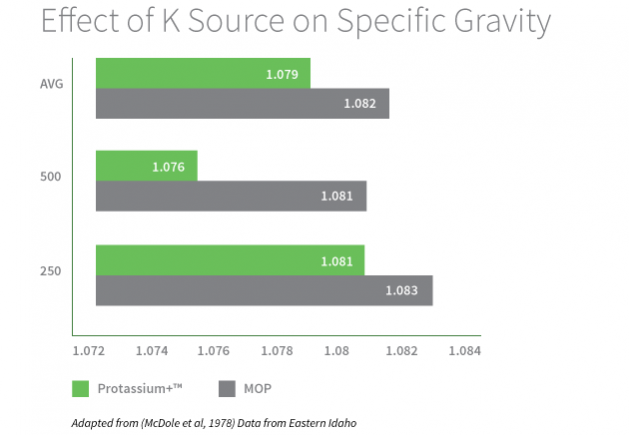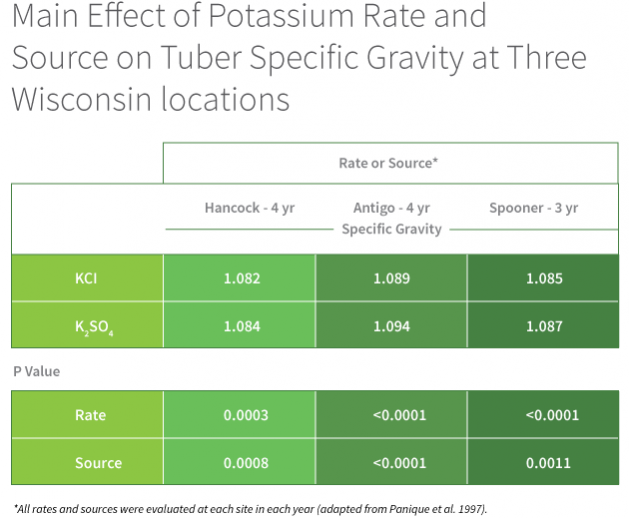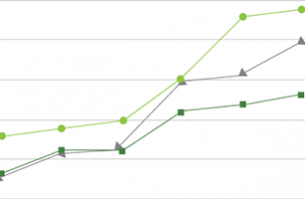Nutrient Management and Specific Gravity
Tuber specific gravity has a strong relationship with starch content, total solids, and mealiness (cooking quality). Low specific gravity in tubers can affect processing and fresh market quality through:
- Increased time and oil for processing
- Lower chip yield
- Darker fry color
It is also important to note that tubers with excessively high specific gravities can be prone to increased bruising.
Right Source
Drawing information from an article by Dr. Carrie Laboski and Dr. Keith Kelling, from the University of Wisconsin1, and combining it with the principles of the 4R’s of nutrient management, the following insight emerges:
Nutrient sources with a high salt index or that add additional salts, lower specific gravity. A number of studies have found that tubers fertilized with potassium sulfate (low salt index and less than 1% chloride) had higher specific gravities than those fertilized with potassium chloride (high salt index and high 47% chloride).
Evidence suggests that the greater concentration of salt in the tissues, the greater amount of water is absorbed into the tuber. With this in mind, a low-salt K source is the best choice for ensuring higher specific gravities.

Right Rate
The Laboski and Kelling article pointed out that when the results of soil test phosphorus levels are low, applications of P have increased tuber specific gravities. Additionally, excess applications of N and K fertilizers late in the season can lead to lower tuber specific gravity.

Use our K Uptake Calculator to see your potassium needs. With this information and the results of your soil tests, you can easily find the right rate of K for your fields.
Right Time
- Adequate P fertility early is critical for vegetative growth and tuber initiation.
- Adequate K fertility is critical for tuber initiation and bulking.
- Matching N application with N uptake increases efficiency and reduces environmental losses. Split applications at planting, emergence and hilling can be efficient.
Right Place
- Application methods that limit environmental fertility losses usually increase nutrient use efficiency, particularly important for N and P uptake.
- Placing nutrients with low mobility (such as P and K) in the crops' root zone through use of starter fertilizers, or concentrating these nutrients at hilling or side-dressing.

Following the 4Rs and utilizing soil and tissue testing to optimize N, P, and K fertility will optimize both yield, and specific gravity for potato production.
1 Laboski, C.A.M., and K.A. Kelling. 2007. Influence of fertilizer management and soil fertility on tuber specific gravity: A review. Am. J. Potato Res. 84:286-290.
2 McDole RE, GF Halknecht, RB DweUe and JJ Pavek. 1978. Response of four potato varieties to potassium fertilization in a seed growing area of eastern Idaho. Am Potato J 55:495-504.



